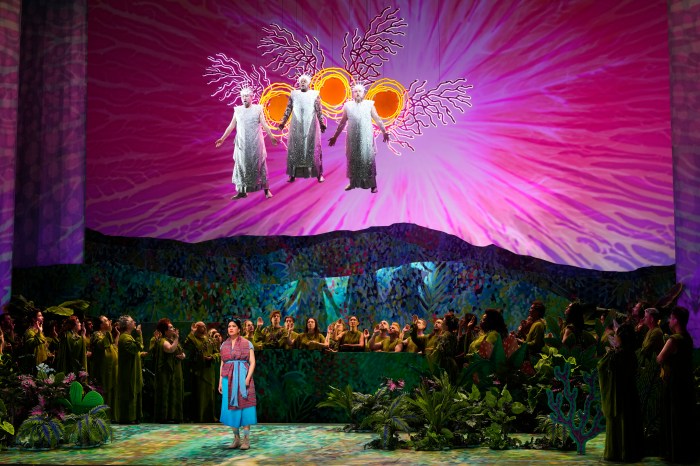Amy Sherman Palladino’s new series, “The Marvelous Mrs. Maisel,” transforms current-day NYC into Manhattan circa 1950 by placing its characters in iconic locations, such as Washington Square Park, and swapping their crop tops and ripped denim for a drastically different wardrobe.
The vibrant Midge Maisel (Rachel Brosnahan) and her signature ankle-length pink coat, maroon gloves and velour hat start off the pilot episode instantly clueing us into the fact that she’s walking streets of an NYC decades prior (in case the signs for turkeys for sale at 49 cents per pound at the local butcher shop wasn’t enough).
“The look is really focused on ‘50s New York,” the show’s costume designer, Donna Zakowska, said. “It’s a combination of post-war period clothing, but also bits of images that leaked from York, England, and France that had an influence on the West Village and Upper West Side differently.”
When we first meet Midge, she’s an UWS mother, spending her afternoons at home making roasts and supporting her businessman husband (Michael Zegen). Her waist-pinching, pleated skirts paired with neat curls and flowery head accent pieces make her a picture-perfect housewife.
“With Midge, I heightened her look a little bit. I wanted to give her clothing a slightly optimistic spirit,” Zakowska said.
Before heading to local thrift shops, including Greenwich Village’s Star Struck, to piece together Midge’s look, the costume design team browsed French Vogues and other fashion magazines from the time period. They aimed to pull out statement-making accessories appropriate for the series’ female daring lead, who ends up swapping her life on the UWS to chase a dream of becoming a stand-up comic downtown.
As Midge becomes a divorcee, moves back home, lands a job and eventually makes it to the stage of the West Village’s niche comedy clubs, the “classic concept of femininity” she exudes through her fashion choices early on breaks down.
Her move between uptown and downtown Manhattan neighborhoods posed a challenge for Zakowska, who explained that the ‘50s styles varied drastically even if one moved a dozen blocks south.
“The biggest thing I had to do was define these different neighborhoods and create those realities while thinking about how the ‘50s infiltrated,” she said. “Downtown dealt a lot with the Beatnik generation in Italian or ethnic neighborhoods. The clothing is much more a mixture of workers’ clothing and was very affected by the music and politics, whereas uptown it’s much more traditional and classic.”
While most characters cringe at the thought of heading downtown (see: the Cleary couple in the pilot), Midge bridges the gap between the contrasting styles of the neighborhoods. As her career progresses and she heads farther south, we’ll see her swap her elegant palette for darker, earthy tones and ethnic patterns.
“[Her look] really captures her attitude toward life at the moment,” Zakowska said. She’ll keep a perkiness to her style, which sends off a 1958 “Auntie Mame” vibe, while transitioning from housewife Midge to working-girl Midge.
“Mrs. Maisel” season 1 hits Amazon’s streaming service in full Nov. 29.
To recreate Midge’s ‘50s look yourself, drop by one of the NYC vintage stores that helped provide her wardrobe:
Star Struck
47 Greenwich Ave, New York, NY 10014; starstruckvintage.com
Stella Dallas
218 Thompson St, New York, NY 10012
Screaming Mimis
240 W 14th St, New York, NY 10011; screamingmimis.com

















